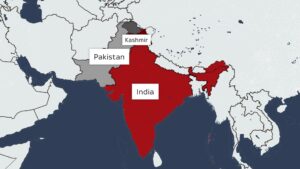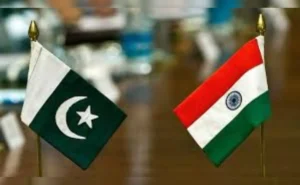India and Pakistan Trade Blame as Conflict Spirals: A Deep Dive into the Escalating Crisis

FOR MORE:https://newsorgames.com/
The longstanding tension between India and Pakistan has once again escalated, leading to a series of confrontations that have drawn international concern. This recent surge in hostilities, particularly over the disputed region of Kashmir, has resulted in significant casualties and heightened fears of a broader conflict.
The Catalyst: April 22 Attack in Pahalgam

On April 22, 2025, a tragic attack in Pahalgam, Indian-administered Kashmir, claimed the lives of 26 civilians, including 25 Indian tourists and one Nepalese national. India attributed this assault to the militant group The Resistance Front (TRF), alleging Pakistani support—a claim Pakistan has firmly denied. This incident marked a significant deterioration in bilateral relations, leading to the suspension of key treaties and agreements. Time+1AP News+1
Retaliatory Strikes and Escalation

In response to the Pahalgam attack, India launched “Operation Sindoor,” targeting alleged terrorist training camps in Pakistan-administered Kashmir. These airstrikes reportedly resulted in the deaths of over 100 militants. Pakistan, in turn, claimed that Indian strikes killed 31 civilians and vowed retaliation. Subsequent exchanges included drone attacks, missile strikes, and artillery shelling along the Line of Control (LoC), leading to further casualties on both sides.
Time+2Business Insider+2The Australian+2Financial Times+3The Australian+3AP News+3
Military Engagements and Civilian Impact
The conflict has seen both nations employing advanced military hardware. Pakistan reported shooting down five Indian fighter jets, including French-made Rafales and Russian MiG-29s, using Chinese J-10C jets. India, meanwhile, claimed successful strikes against Pakistani air defense systems. These military engagements have not only resulted in military casualties but have also severely impacted civilian populations, with towns like Poonch and Uri experiencing significant distress.
The Australian+3Business Insider+3Al Jazeera+3AP News
International Reactions and Diplomatic Efforts
The international community has expressed deep concern over the escalating tensions. U.S. Secretary of State Marco Rubio urged both nations to de-escalate and engage in direct dialogue. While the U.S. has offered informal support, it has refrained from formal mediation. Other global powers, including the United Nations, have also called for restraint and a return to diplomatic negotiations. Reuters
Potential Solutions and Path Forward
To address and resolve the ongoing conflict, several measures can be considered:
-
Reinstating Diplomatic Channels: Both nations should reopen diplomatic dialogues, focusing on confidence-building measures and conflict resolution mechanisms.
-
International Mediation: Engaging neutral international mediators could facilitate unbiased negotiations and help in reaching a sustainable solution.
-
Addressing Root Causes: A comprehensive approach to tackle underlying issues, including terrorism and territorial disputes, is essential.
-
Humanitarian Initiatives: Both countries should prioritize humanitarian concerns, ensuring the safety and well-being of civilians affected by the conflict.

Leave a Reply